The Twelve Days of Christmas Oratorio
We’ll be adding another musical gift every day, from Christmas Day until our Christmas Oratorio on Twelfth Night, 5 JanuaryOn the first day of Christmas,
the Durham Singers gave to me...
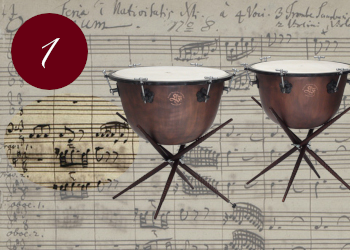
… One drummer starting things off
Our timpanist, Paul Campbell, has the most exciting job of the night: his five-note drum motif, followed by a fanfare of winds and brass gets the first chorus of the Christmas Oratorio off to a thrilling start. This music was first heard on Christmas Day 1734, in Leipzig and must have been an astonishing Christmas treat for the congregation of the Nikolaikirche. Happy Christmas everyone.On the second day of Christmas,
the Durham Singers gave to me...
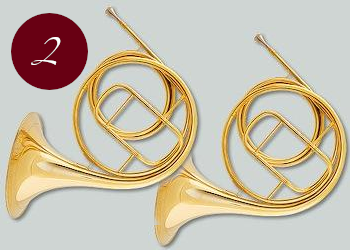
… Two natural horns
One of the reasons for including Cantata IV in our selection is that we’ll be able to enjoy the sound of two natural horns adding their warmth to the opening chorus and closing chorale.The natural horn has no valves and requires a very specialised playing technique: the pitch is controlled by wind pressure, and by adjusting the position of the hand in the bell.
… Two natural horns
One of the reasons for including Cantata No.4 in our selection is that we’ll be able to enjoy the sound of two natural horns adding their warmth to the opening chorus and closing chorale.The natural horn has no valves and requires very specialised technique: the pitch controlled by wind pressure, and by adjusting the position of the hand in the bell.
On the third day of Christmas,
the Durham Singers gave to me...
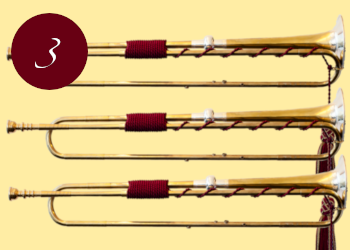
… Three baroque trumpets
Trumpets play a part in much of Bach’s most joyful music, and Christmas Oratorio is no exception: from the first chorus to the final chorale, the three trumpets are there sprinkling glitter over the music. Listen out for the ecstatic trumpet solo in the aria “Grosser Herr” at the end of part one, followed by all three trumpets adding radiance to the chorale that follows.On the fourth day of Christmas,
the Durham Singers gave to me...
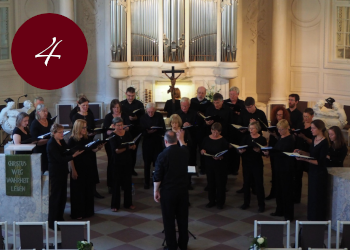
… Four choral parts
Bach gives his choir an exciting and virtuousic workout in the Christmas Oratorio choruses. Cantatas I, IV and VI open with a chorus that sets the mood of the story to follow, but in Cantata II Bach holds the chorus movement back until the angels appear, singing ‘Glory to God’ . We’ve been told to make this chorus fizz like champagne, and we hope you enjoy it as much as we do.
… Two natural horns
One of the reasons for including Cantata No.4 in our selection is that we’ll be able to enjoy the sound of two natural horns adding their warmth to the opening chorus and closing chorale.The natural horn has no valves and requires very specialised technique: the pitch controlled by wind pressure, and by adjusting the position of the hand in the bell.
On the fifth day of Christmas,
the Durham Singers gave to me...
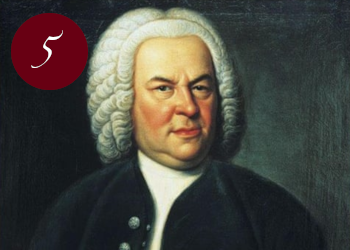
… Five Bach Cantatas
Surprise! You might know that we’re singing four out of the six cantatas that make up Christmas Oratorio, but we’re also slipping in a bonus track – the chorus “Liebster Immanuel, Herzog der Frommen”, from Cantata BWV 123, written for the Feast of the Epiphany in 1725. Briefly, we leave to one side the highly coloured story-telling world of the Christmas Oratorio; this is a moment of intense religious devotion, asking for the coming of the Saviour.
On the sixth day of Christmas,
the Durham Singers gave to me...
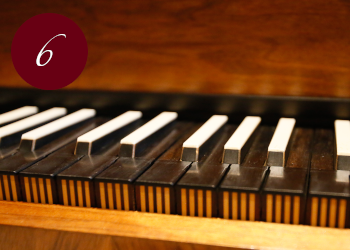
… Six continuo players
The continuo section is the engine room of the baroque orchestra. They underpin all the choral movements, but their most important role is in accompanying the narrative recitative passages, adding expressive touches of colour to the text. For Christmas Oratorio, our continuo section is made up of chamber organ, harpsichord, cello, double bass, bassoon and theorbo (giant lute).
… Two natural horns
One of the reasons for including Cantata No.4 in our selection is that we’ll be able to enjoy the sound of two natural horns adding their warmth to the opening chorus and closing chorale.The natural horn has no valves and requires very specialised technique: the pitch controlled by wind pressure, and by adjusting the position of the hand in the bell.
On the seventh day of Christmas,
the Durham Singers gave to me...
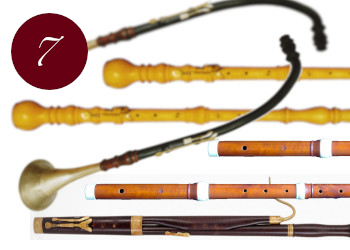
… Seven pipers piping
Today we meet our wind section: four oboists, two flautists and a bassoonist. As well as the standard oboe, we’ll hear the sweet sounds of the lower-pitched oboe d’amore and the oboe da caccia (in the picture with the large bell). The loveliest moment for the winds is the shepherds’ pastorale that replaces a chorus to introduce the second cantata.
On the eighth day of Christmas,
the Durham Singers gave to me...
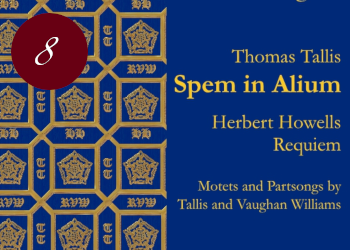
… Eight choirs of five
Happy New Year! Today we’re taking a brief look further ahead into 2019 to our Lent concert, which concludes with one of the most magnificent pieces of unaccompanied choral music ever written: Thomas Tallis’s “Spem in Alium”, for 40 voices, divided into eight choirs. We’re singing it in the cathedral, along with Herbert Howells’s poignant Requiem, and other works by Tallis and Vaughan Williams. Details and tickets
… Two natural horns
One of the reasons for including Cantata No.4 in our selection is that we’ll be able to enjoy the sound of two natural horns adding their warmth to the opening chorus and closing chorale.The natural horn has no valves and requires very specialised technique: the pitch controlled by wind pressure, and by adjusting the position of the hand in the bell.
On the ninth day of Christmas,
the Durham Singers gave to me...
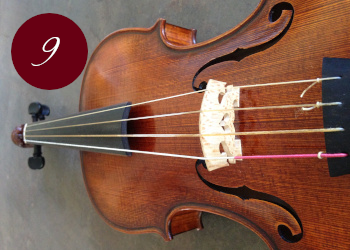
Nine fiddlers bowing
Baroque violins and violas are played with shorter, curved bows, and with minimal vibrato. The instruments have shorter necks, no chin pad and use gut strings (despite being called “catgut” they’re usually made from sheep or goat intestine), resulting in a lighter, sweeter sound. We’re delighted to welcome back Caroline Balding from the Avison Ensemble to lead the Durham Singers Ensemble again.On the tenth day of Christmas,
the Durham Singers gave to me.
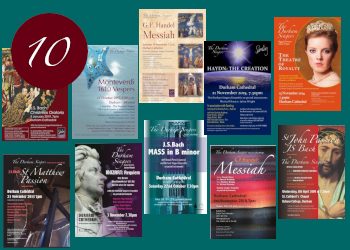
Ten orchestral concerts
This year’s performance of Christmas Oratorio is our tenth concert with period instruments. We began in 2009 in Ushaw College with Bach’s St John Passion before moving to the cathedral in 2010 for Messiah (the only work we’ve repeated in the series). All these concerts have been with the Durham Singers Ensemble, except for our 2017 collaboration with I Fagiolini and the English Cornett and Sackbutt Ensemble for Monteverdi’s 1610 Vespers.… Two natural horns
One of the reasons for including Cantata No.4 in our selection is that we’ll be able to enjoy the sound of two natural horns adding their warmth to the opening chorus and closing chorale.The natural horn has no valves and requires very specialised technique: the pitch controlled by wind pressure, and by adjusting the position of the hand in the bell.
On the eleventh day of Christmas,
the Durham Singers gave to me...

Eleven Samling Singers
Once again we’re delighted to be collaborating with Samling Institute for Young Artists with soloists from their Samling Artist and Samling Academy programmes. Samling Artist Timothy Langston (pictured) sings the Evangelist and tenor solos, and he’s joined by four younger soloists and a semi-chorus of sopranos from Samling Academy. You can read more about our work with Samling here:
On the twelfth day of Christmas,
the Durham Singers gave to me.
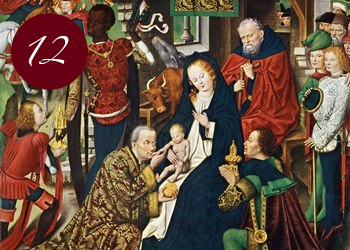
Twelve Bach chorales
The countdown is over: it’s concert day, and we’re finishing our Christmas Oratorio treats with the twelve chorales that we’ll sing tonight. The chorales in the Christmas Oratorio range from very simple four part hymns to elaborate settings with instrumental accompaniment to end each cantata. The oratorio ends in blaze of glory as trumpets lead a jubilant dance into the final chorale ‘Nun seid Ihr voll gerochen’. See you later in the cathedral.… Two natural horns
One of the reasons for including Cantata No.4 in our selection is that we’ll be able to enjoy the sound of two natural horns adding their warmth to the opening chorus and closing chorale.The natural horn has no valves and requires very specialised technique: the pitch controlled by wind pressure, and by adjusting the position of the hand in the bell.
